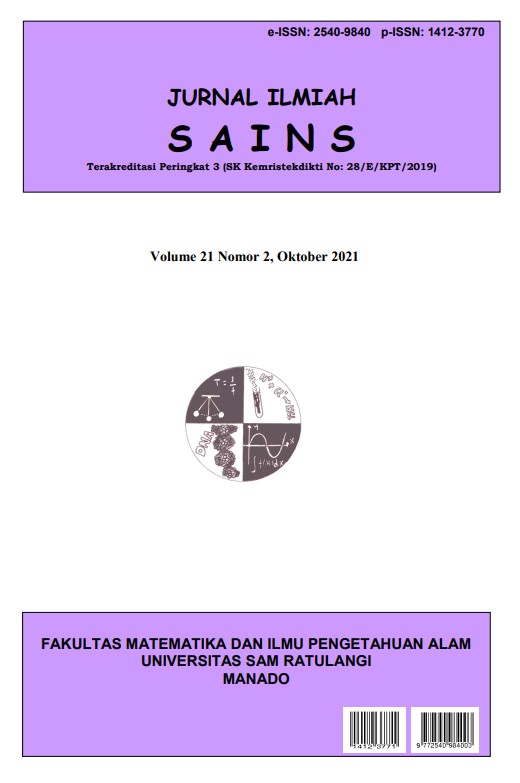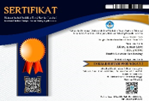Tingkat Kebisingan dan Perambatan Suara Akibat Bunyi Luar Pada Gereja Masehi Injili Minahasa (GMIM) Kampus Unsrat dan GMIM Bethesda Manado
DOI:
https://doi.org/10.35799/jis.v21i2.35630Abstract
Penelitian ini bertujuan untuk mengetahui kontribusi dinding dan arsitektur ruang serta jarak gedung ke jalan terhadap reduksi bising dari luar kedalam bangunan, dan distribusi bunyi yang terjadi. Studi kasus pada 2 gereja yaitu gereja GMIM Kampus Unsrat dan gereja GMIM Bethesda Ranotana di Kota Manado. Sebuah sumber bunyi di letakkan di luar ruang dekat pagar pada jarak 12 m terhadap gedung, dengan kuat bunyi konstan namun bervariasi antara 60 sampai dengan 100 dB dengan tahapan setiap 10 dB. Kuat bunyi dihitung dan diukur pada setiap jarak 2 m diruang luar dan dalam Gereja. Pengukuran menggunakan alat sound level meter. Perhitungan menggunakan teori akustik ruang dan software I_Simpa. Hasilnya menunjukkan bahwa konfigurasi arsitektur selubung dan ruang bangunan kedua gereja tersebut dalam keadaan kosong hanya mampu mereduksi bising sebesar 2.2 dan 3.7 dB, dengan jendela terbuka. Dengan sumber suara 100 dB di ruang luar, hasil pengukuran di ruang dalam pada kedua gereja mencapai 69.3 dB(A) dan 56.4 dB(A). Rentang bunyi tersebut masih tergolong bising dan belum memenuhi syarat kenyamanan bunyi untuk jenis bangunan ibadah menurut SNI. Visualisasi distribusi bunyi dengan menggunakan software I_Simpa, menunjukkan peran bukaan pintu dan jendela yang menyebabkan kebocoran bunyi kedalam ruangan.
Kata kunci: Akustika; Â bising; dinding; gereja
 Noise Level and Sound Propagation Due to Outside Sound at GMIM Church Unsrat Campus and GMIM Bethesda Manado
ABSTRACT
This research aims to determine the contribution of walls and architectural interior, and the distance of the building to the road to the reduction of noise from outside into the building as well as the distribution of sound that occurs. Case studies on 2 churches: the GMIM Church of Unsrat Campus and the GMIM Bethesda Ranotana Church, both in Manado City. A sound source was placed outside the room near the fence at 12 m from the building. The sound source was constant but varied from 60 to 100 dB with steps every 10 dB. Sound reception was calculated and measured every 2 m distance at outside and inside. Measurements were carried out using sound level meter. Calculations by acoustic theory and I_Simpa software. The results show that the churches when room is empty, had only able to reduce the noise by 2.2 and 3.7 dB, with opened windows. When a 100 dB sound source was applied, the measurement results in the indoor of the two buildings reached 69.3 dB(A) and 56.4 dB(A). Graphical visualizations of sound distribution by using I_Simpa software, showed the role of door and opened window that cause sound leakage into the room.
Keywords: Acoustic; church; noise; wallReferences
Bojongo, M.B.P. 2020. Regulations of noise pollution emitted by revival churches and the well-being of neighboring populations in Cameroon. Environmental Economics,11(1):82-95.
Christian, O. & Eberechi, A. 2019. Emergent Religious Bodies and Noise Pollution: Perspectives on Enugu Metropolis and Environs. Scholars International Journal of Law, Crime and Justice, 2(9): 271-277.
Drew, K., Macfarlane, R., Oiamo, T., Mullaly, M., Stefanova, D. & Campbell, M. 2017. How Loud is Too Loud? Health Impacts of Environmental Noise in Toronto. Toronto Public Health, Technical Report, Toronto, Canada.
Du, L., Lau, S.K. & Lee, S.E. 2019. Experimental study on sound transmission loss of plenum windows. The Journal of the Acoustical Society of America, 146:489-495.
Gemade, K.C. & Inja, T. 2020. Tackling Noise Pollution in Urban Benue: The Role of the Church. Int. Journal on Biblical and Cognate Studies, 1:188-205.
Ibekwe, M. 2018. Tinnitus; an Index of Noise Pollution amongst Church Worshippers in Port Harcourt Metropolis. Global Journal of Otolaryngol, 18(4):62-66.
Locher, B,, Piquerez, A., Habermacher, M., Ragettli, M., Röösli, M., Brink, M., Cajochen, C., Vienneau, D., Foraster, M., Müller, U. &
Wunderli, J.M. 2018. Differences between Outdoor and Indoor Sound Levels for Open, Tilted, and Closed Windows. Int. Journal of. Environ. Research Public Health, 15(149): 2-16.
Mama, Y., Fostich, L. & Icht, M. 2018. The impact of different background noises on the Production Effect. Acta Psychol (Amst), 185:235-242.
Mavrin, V., Makarova, I. & Prikhodko, A. 2018. Assessment of the influence of the noise level of road transport on the state of the environment. Transportation Research Procedia, 36: 514–519.
Mediastika, C.E., Kristianro, L., Anggono, J., Suhedi, F. & Purwaningsih, H. 2018. Open windows for natural airflow and environmental noise reduction. Architectural Science Review,61(5): 338-348.
Patel, R. 2020. Architectural Acoustic, A guide to integrated thinking. RIBA Publishing, London.
Poetiray, M.S.G., Ekasiwi, S.N.N. & Arifianto, D. 2015. Pengukuran Kebisingan Bangunan Gereja Terbuka. Studi Kasus Gereja Puh Sarang – Kediri. Proceedings of The 2nd ECO-Architecture Conference (EAC 2):265-274.
Septiana, N.R. & Widowati, E. 2017. Gangguan Pendengaran Akibat Bising. HIGEIA: J. of Public Health Researcrh and Development,1(1):73-82.
Subagio, I. 2017. Attenuasi Bising Lingkungan dan Bukaan pada Ruang Kelas Sekolah Dasar Berventilasi Alami di Tepi Jalan Raya. Media Matrasain, 14(2):1-13.
Supriatna, U., Poniman, D. & Kosasih. 2020. Pengaruh Jenis Klakson pada Mobil Terhadap Tingkat Kekuatan Bunyi. Jurnal Mesa Jendela Informnasi Teknik, 4(1):1-6.







